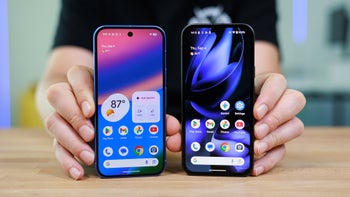IFTTT for Android review: a promising start, but not the ultimate automation solution

| Developer: IFTTT | Download: Android (v 1.0.5, updated May 2, 2014) |
| Category: Productivity | Price: Free |
We got the feeling of enlightenment just moments later, right after coming across a big blue button labeled "Browse Recipes". Recipes, as we found out, are presets combining a trigger with an action – if the former is activated, then the latter is performed. Tons of these are submitted by fellow IFTTT users, and others are free to borrow the ones they find useful. We also figured out what channels were – services that IFTTT could interact with. As of this writing, the list of channels features a hundred items, including apps from media outlets, social networks, cloud services, and news readers. Triggers and actions can be pulled from these channels, or from events occurring on the device itself.
"Now we're talking," we thought to ourselves while scrolling down the list of IFTTT recipes. We activated a few, including one set to display a notification if rain was on the weather forecast for the next day. And what do you know, the recipe worked like a charm! We also added one to mute our ringer past bedtime and one to keep our text messages logged in a Google Drive spreadsheet. At this time, we were already feeling confident enough to try building a recipe on our own.
Our first custom IFTTT recipe was designed to mute a phone when it connected to our office Wi-Fi network, and the second one had the task of unmuting the device when the network was out of range. These worked, but not every single time, and sometimes they were being triggered twice, which was a bit annoying. This is when we started to suspect that IFTTT did not work without an active internet connection. Sadly, we were right. On one hand, this can't be seen as too major of a drawback since, you know, it is okay for a service built to talk with other internet services to require to be online at all times. But on the other hand, it is a bit underwhelming to know that recipes not relying on an internet connection (like auto-replying with an SMS when you miss a call) won't work without one.
Anyway, our recipe list kept on growing, and for the sake of this review, we added a time-triggered action – a notification had to pop-up at exactly noon and then re-appear every hour. It didn't work. Not until it was already late in the afternoon, hours after it was supposed to start doing its thing. What's more, the notification was late by 6 minutes. If IFTTT can't handle timed events well, how are we supposed to rely on it for more complicated stuff?
IFTTT on Android was starting to shape up as a hit-or-miss solution. It did work with many of the recipes that we put together ourselves, although not always as expected. For the record, every photo that we uploaded to Facebook got copied to Dropbox as well. Sure, photos got copied twice for some reason, but hey, at least they were there. We tried to make Dropbox copies of FB photos that we were tagged in, but this recipe didn't work. On the other hand, recipes that used Twitter, Gmail, or system events worked as configured. It was also doing a great job at logging our text messages on Google Drive.
Overall, IFTTT for Android seemed like a very promising app at first, but it didn't quite meet our expectations. We must admit that the software is very easy to get the hang of, and the list of triggers and events is quite impressive. The overall reliability of the service, however, leaves room for improvement. Still, this is an app that you should keep an eye on. It is still a fairly new arrival to the Play Store, and future updates could rectify the software's underwhelming performance.
Pros
- Easy to learn and use
- A rich selection of channels, triggers, actions, and ready-made recipes
- Free
- No noticeable effect on battery life
Cons
- Some recipes do not work as expected, or fail to run completely
- App does not work without an active internet connection
- Limit of just one action per trigger
| Developer: IFTTT | Download: Android (v 1.0.5, updated May 02, 2014) |
| Category: Productivity | Price: Free |
Follow us on Google News













Things that are NOT allowed:
To help keep our community safe and free from spam, we apply temporary limits to newly created accounts: